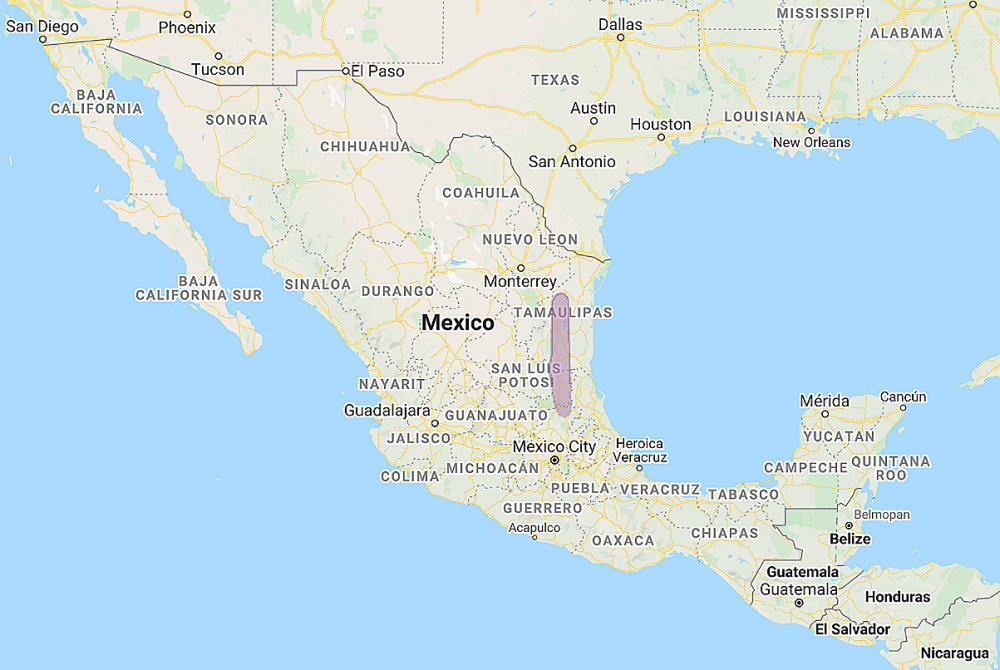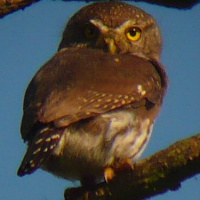Introduction
The Tamaulipas Pygmy Owl is a tiny owl with no ear-tufts and a relatively long tail.
Photo Gallery (2 pictures)
Sound Gallery
Information
Description: Male: The facial disc is brownish, flecked white to pale buff. Eyebrows are whitish and eyes are yellow. The cere is
yellowish-grey and the bill horn-yellow. The crown, nape and upperparts are a rich olive-brown, with the crown being slightly greyer. The forecrown is finely
spotted pale cinnamon to whitish, the spots extending along the sides of the crown to the nape, which has two large eye spots (occipital face). The wing coverts
are spotted pale, and the scapulars have indistinct paler areas on the outer webs. Flight feathers are barred dark and light. The tail is brown with 5-6 broken
whitish bars.
Underparts are whitish, with rufous-brown streaking. There is rufous brown mottling on the sides of the upper breast, spotted pale buff.
Tarsi are feathered and the yellowish-grey toes are bristled. Claws are horn with darker tips.
Female: Differs in having the crown, nape, and upperparts rufous-brown.
Size: Length 13-16cm. Wing length 86-94mm. Tail length 51-57mm. Weight 51-55g. Females are heavier and larger than males.
Habits: The Tamaulipas Pygmy Owl is a partly diurnal bird. Little else is known about its habits.
Voice: A sequence of 2-3 high-pitched, hollow, drawn-out notes and a rate of 2 per second. This call is given at regular intervals and repeated after several seconds - "phew-phew phew-phew-phew phew-phew...". A tremulous whistle may precede the song.
Hunting & Food: Most likely feeds mainly on insects and lizards, as well as other small vertebrates.
Breeding: The breeding habits of the Tamaulipas Pygmy Owl are little known, but are likely similar to other pygmy owls. Nests are mainly in abandoned woodpecker holes. The female lays 2-4 white eggs.
Habitat: Humid subtropical evergreen and pine-evergreen montane and cloud forest, at 900-2100m elevation.
Distribution: This owl is endemic to the mountains of Northeast Mexico, from Tamaulipas and Southeast San Luis Potosí to North Hidalgo.

Range of the Tamaulipas Pygmy Owl Glaucidium sanchezi
Status: Listed as 'Near Threatened' by Birdlife International.
Original Description: Lowery, George Hines, Jr., and Newman. 1949. Occasional Papers of the Museum of Zoology Louisiana State University (Occ. Pap. Mus. Zool. LSU), no. 22: p. 1-4.




